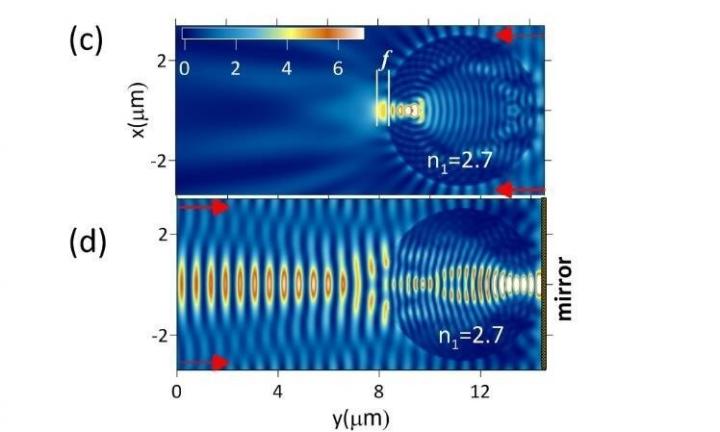TOMSK, Russia, Aug. 27, 2020 — A team from Tomsk Polytechnic University (TPU), working with scientists from the V.E. Zuev Institute of Atmospheric Optics of the Siberian Branch of the Russian Academy of Sciences, has increased the operation range and stability of optical tweezers. In the team’s method, light, interacting with a microparticle, is focused in the form of a photon jet in the direction opposite the radiation incidence. The photon jet functions as a trap.
Forming a photon jet from a dielectric particle with the ratio of a particle and a medium higher than two can increase the optical traps’ capture area, said Igor Minin, project manager and professor of the TPU Division for Electronic Engineering. To form a classic photon jet, the ratio of the refractive indices of a particle and a medium must be less than two. It was not previously believed that scientists could increase the refractive index and simultaneously form a photon jet.
The Minin-led team instead formed a jet in the reflective mode. Placing a flat mirror behind a dielectric particle generated double-focused light when the light was focused through a particle onto the mirror. The mirror reflected light back to the particle, forming the jet, which had a ratio of a particle and a medium higher than two.
The team used microparticles made of a dielectric material, such as quartz, instead of lenses to increase the optical field’s degree of localization in the optical traps’ focus area.
“In the longitudinal direction, the region of localization of nanoparticles is determined by the size of the antinodes/nodes of the standing wave,” Minin said. “In the transverse direction it is determined by the size of the width of the photonic jet. The length of the capture region is determined by the length of the photon jet — and can reach 10 wavelengths.”

Placing a flat mirror behind a particle so that the focal point moves to the mirror resulted in double-focusing — meaning the light is focused through a particle on the mirror, which reflects it back to the same particle that forms a photon jet. The jet forms with the ratio of a particle and a medium higher than two, increasing the capture area. Courtesy of TPU.
Minin and his colleague (and brother), TPU professor of physics Oleg Minin, first demonstrated the ability to form a photon jet using dielectric particles without axial symmetry of the spatial form in 2014. The research showed that by manipulating the shape of a particle, the team could also dictate the parameters and shape of the photon. In 2016, the Minins and a team of researchers modified a subwavelength, standing-wave optical trap based on photon jets formed in the reflection mode. In the subwavelength optical trap, the width of the generated jet, not the focus lens parameters, determined the minimum size of the focus area. A decrease in the diameter of the jet waist compared with the size of the waist in the focus of the lens increased the energy density in the focal region.
The ongoing research has also shown the possibility of forming a photon jet from particles of a three-dimensional shape as opposed to the conventional cylinders and/or spheres, Igor Minin said.
“We named our lines of research in these areas ‘mesoscale photonics,’” Minin said. A corresponding conference, called “Photonics and Plasmonics at the Mesoscale,” was held in April this year at SPIE Photonics Europe.
Optical tweezers are just one application of the science, and experiments intended to confirm the simulation results in practice are underway. Those experiments, Igor Minin said, are planned in both the optical and acoustic ranges.
The Russian Foundation for Basic Research partially funded the work. The research was published in Optics Letters (www.doi.org/10.1364/OL.398367).